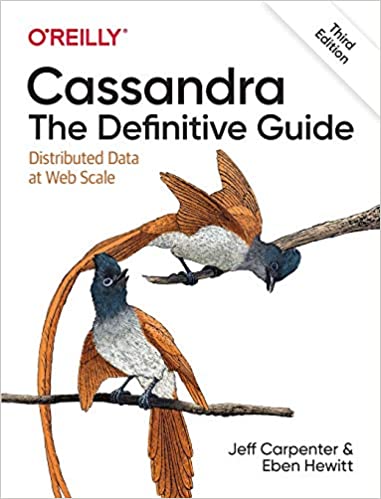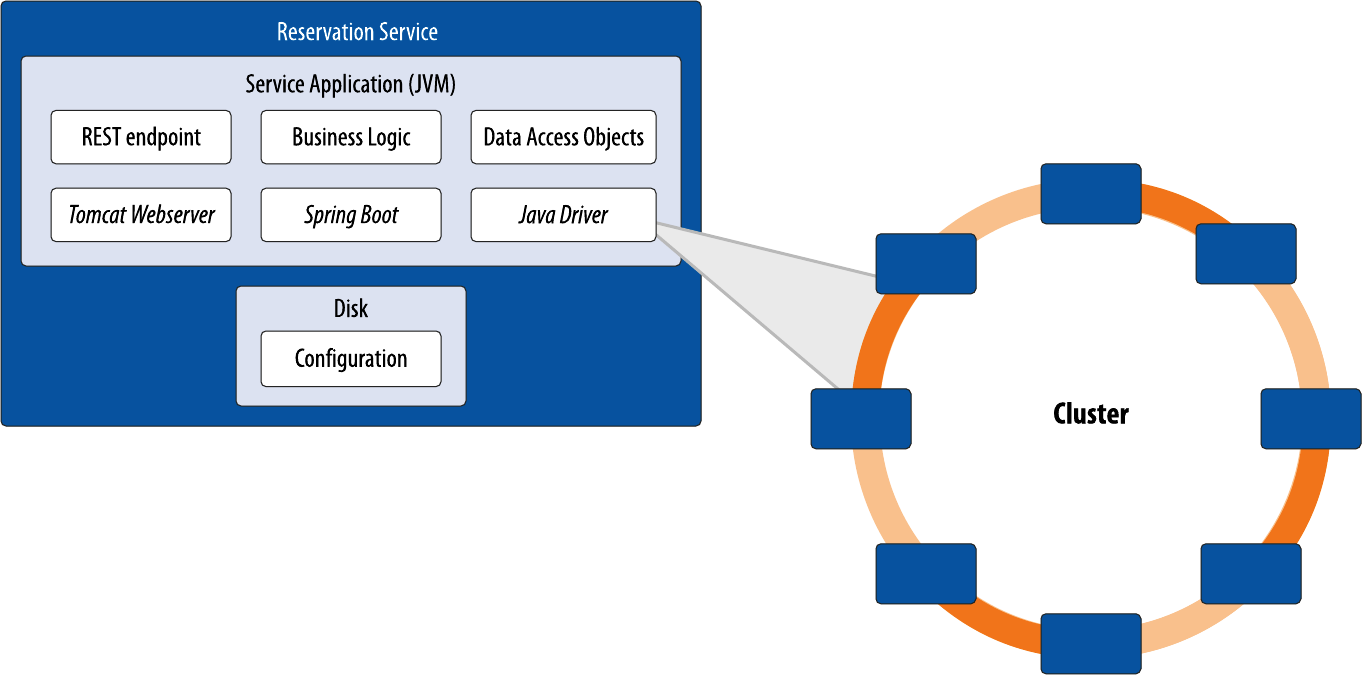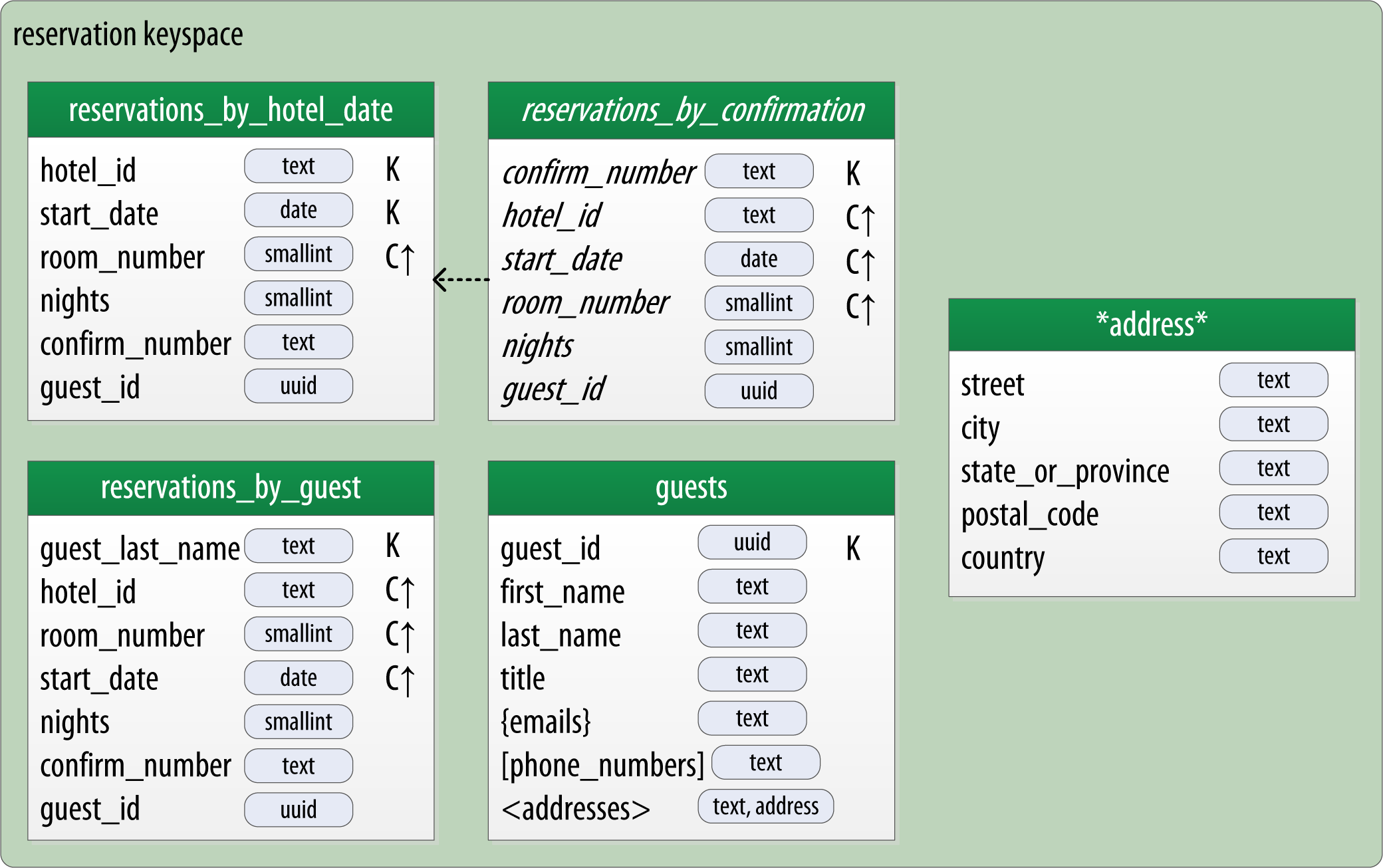This repository provides a sample microservice implementation based on the reservation data model from the O'Reilly book Cassandra: The Definitive Guide, 3rd Edition
See especially Chapter 7: "Designing Applications with Cassandra", which describes the design of the service, and Chapter 8: "Application Development with Drivers", which covers the implementation.
The goal of this project is to provide a minimally functional implementation of a microservice that uses Apache Cassandra for its data storage via the DataStax Java Driver. The Reservation Service is implemented as a RESTful service using Spring Boot and exposes it's API via Swagger.
This service leverages the reservation schema developed in the book, based on the data model shown here:
If you'd like to understand more about the motivation behind this design, you can access the data modeling chapter from the book for free at the O'Reilly website.
This service runs on Java 11 or 12 and uses the DataStax Java Driver.
The Reservation Service requires a Cassandra cluster consisting of least one node.
Here are some different options for running the Reservation Service:
-
Option 1: Run Cassandra and the Reservation Service in Docker with
docker-composecommand.- Build the application by running
./mvnw compile docker-compose upif you want to follow the logs ORdocker-compose up -dto start all containers in detached mode.
- Build the application by running
-
Option 2: Running using Spring boot against a local Cassandra instance
- Confirm the default JDK is version 11 or later
- Download binaries for your platform from http://cassandra.apache.org/download/
- Unzip the archive, for example
tar xvf apache-cassandra-3.11.6-bin.tar.gz some-directory - Start Cassandra by running
bin/cassandra - Start spring-boot app by running
./mvnw spring-boot:run
Once the application is running, you can access the Swagger API at localhost:8080.
The test suite for the Reservation Service uses the Test Containers project to start a Cassandra node in Docker. You'll want to shut down any infrastructure you created above under Running the Reservation Service.
Run the test suite with the Maven test target:
./mvnw test
This repository is configured with branches that represent the start point and solution for various exercises used in an online course taught periodically with O'Reilly Live Training. These exercises remove some of the application code and require you to add it back in to get the service back to a functional state. There are exercises to help you learn the various ways of executing statements, such as SimpleStatement, PreparedStatement, QueryBuilder and the Object Mapper. Other exercises teach you how to use batches, lightweight transactions and materialized views.
To work on an exercise, select the branch that represents the start point of the exercise, for example: git checkout simple-statement. Then search through the code and complete the TODO items and run the service again until the service is working. You can view the solution code for a given exercise in the _solution branch, for example git checkout simple-statement-solution.
This repository was updated beginning in July 2019 to use the DataStax Java Driver Version 4.x series. Branches beginning with old_ represent exercises from a prior version of the course and use the 2.x Driver.
This service has a couple of shortcomings that would be inappropriate for a production-ready service implementation:
- There is minimal data validation
- There is minimal handling of fault cases
- The schema makes use of Strings as identifiers instead of UUIDs
With respect to that last point about UUIDs: for this service I take the same approach that I did for the book. When working with small scale examples, it is simpler to deal with IDs that are human readable strings. If I were intending to build a real system out of this or even implement more of the "ecosystem" of services implied by the book's data model, I would move toward using UUIDs for identifiers. For more of my thinking on this topic, please read the Identity blog post from my Data Model Meets World series.
I found this tutorial helpful in getting this implementation up and running quickly.
Special thanks to Cedrick Lunven for his help in modernizing this app.
Comments, improvements and feedback are welcome.
Copyright 2017-2020 Jeff Carpenter
Licensed under the Apache License, Version 2.0 (the "License"); you may not use this file except in compliance with the License. You may obtain a copy of the License at
http://www.apache.org/licenses/LICENSE-2.0
Unless required by applicable law or agreed to in writing, software distributed under the License is distributed on an "AS IS" BASIS, WITHOUT WARRANTIES OR CONDITIONS OF ANY KIND, either express or implied. See the License for the specific language governing permissions and limitations under the License.


